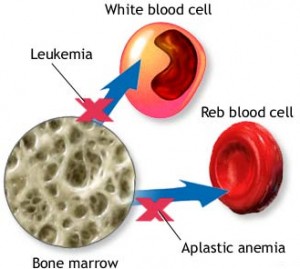
Chronic myelogenous leukaemia (CML) is often referred to as chronic myeloaryngology. It is a disease that usually starts in some of the blood-forming cells in the bone marrow, particularly from a certain group of bone marrow cells that normally produce blood cells. When CML first occurs, it is generally non-specific and can manifest itself in many different ways. There is currently no known cure for this disease.
In most cases, the early stage of this disease is characterized by fatigue, anemia and muscle weakness
In some instances, the disease may be so mild that the patient may not even know he or she has had CML.
If CML strikes in the bone marrow, it will begin in a cell-producing bone marrow cell called the B-cell. This cell will then begin to divide abnormally, creating new bone marrow cells that may spread to other parts of the body (necrotic bone marrow cells) and cause problems with blood cells. This is often called disseminated intraluminal leukaemia, or DLL.
In some cases, the disease may spread to bone marrow cells in the bloodstream before spreading to the bone marrow of the bone cells producing blood cells. These are referred to as disseminated arterial leukaemia.
CML can affect both men and women. It is more common in men than women, but it can also happen to women. Although most cases of CML have no symptoms, they can still progress. The disease is generally diagnosed when doctors find abnormal bone marrow cells on a blood test.
Bone marrow cells in the bone marrow are very similar to blood cells, and they are therefore able to divide to form blood cells – red blood cells, white blood cells and platelets. In rare cases, they can also grow into tumor cells (or monoclonal gingular leukemia).
CML can be treated with many different treatments. One of these is chemotherapy, which is used to kill off cancerous cells. Other treatments include immunotherapy, which is used to destroy lymphocytes (tuberculosis-causing B-cells), and also treatment with immunoglobulin (anti-immunoglobulin).
The latest treatment option is surgery. In this procedure, the cancerous bone marrow cells are removed, allowing them to be destroyed without harming the other bone marrow cells. Chemotherapy treatment may also involve the use of chemotherapy drugs to target cancerous cells at the site where they are being targeted. Surgery is a highly effective treatment and is usually given to treat patients who may not respond well to other treatments.
In the United States alone, bone marrow cancer affects nearly a million people, making it the eighth most common type of cancer. It usually affects the elderly, but it can also affect children as young as two years of age. In women, the risk of developing the disease is about three times higher. There are several reasons why women are more likely to suffer from this than men.
When bone marrow cancer affects a woman, it causes major changes in the way her body works by destroying the bone marrow itself. This means that the number of blood and bone marrow cells produced will decrease dramatically and the body will not be able to produce enough of them to meet the needs of the body's cells. There is a high risk of bone marrow failure.
Chemotherapy is a beneficial treatment for bone marrow cancer because it can help stop the cancer from spreading to the bone marrow, thereby stopping the production of bone marrow cells. This is especially important if the cancer has already spread to the bone marrow.
Other treatments include the use of immunotherapy, which aims to kill cancer B cells in the bone marrow, but has limited success, can also be found out คอลลาเจนบำรุงกระดูกยี่ห้อไหนดี. These drugs will also have detrimental effects on blood cells, interfering with their normal functioning. They can also target monoclonal laryngeal leukemia and disseminated arterial leukemia.
In the most extreme cases of CML, doctors may decide to treat the cancer at its source, where the cancer cells have spread to the bone marrow, and destroy the bone marrow cells themselves. However, the side effects of these treatments include severe bone deformities and bone marrow death, so they are rarely used. These treatments are often for patients with very severe CML.
Leave a Reply